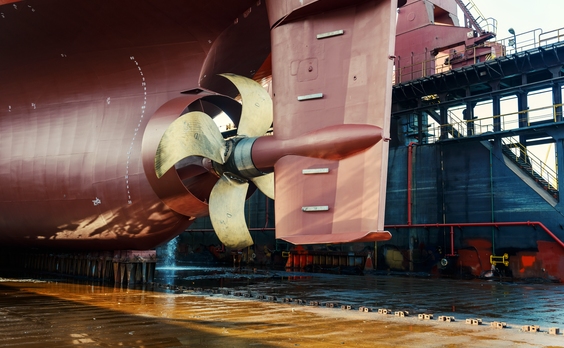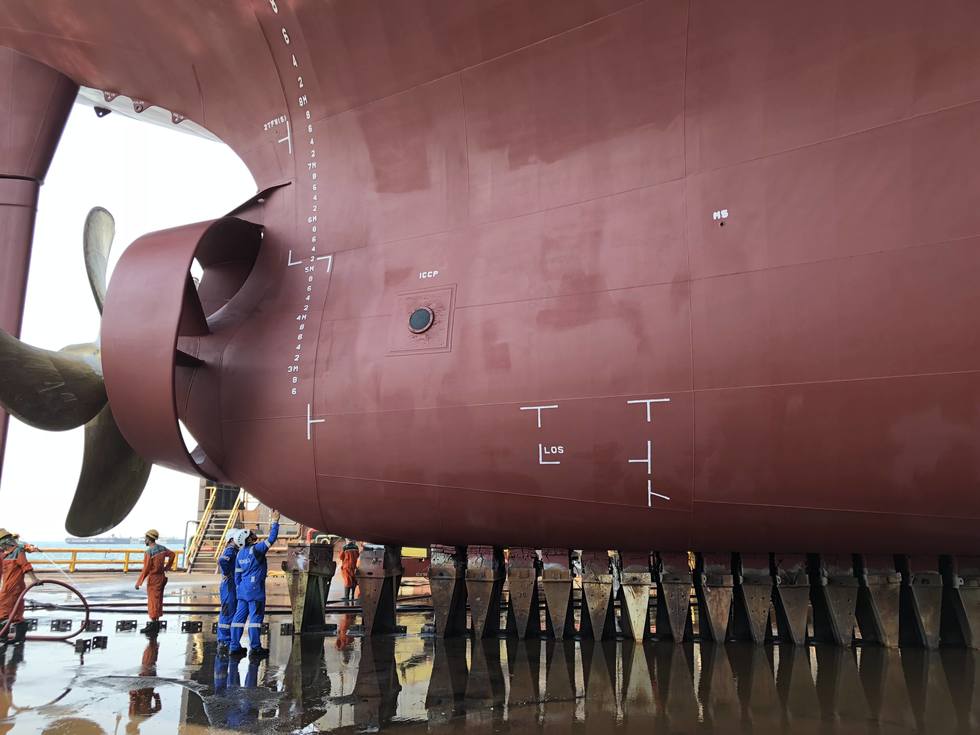Just as the famous ditty by Peter Allen goes, "everything old is new again", the decades-old PBCF is regaining popularity in an industry-wide push towards greener, more sustainable practices. The conversation has shifted as the shipping industry, Odfjell included, sets ambitious targets to reduce greenhouse gas emissions. Odfjell has for a long time worked to increase our own fleet's energy efficiency towards ultimately being climate-neutral by 2050, and one of the latest project installations, of numerous through the years, is the PBCF and the Mewis Duct.
The Propeller Boss Cap Fin: Tried, tested and trusted
The device, which fits like a cap on the back of a propeller, was first tested on the seven-year-old tanker Bow Trajectory in 2019. It has since been installed on nine additional ships since 2020. Three more will be installed within 2022, at a minimum, and more to follow.

Illustration, Propeller Boss Cap Fin

The device, co-developed and introduced in 1987 by Tokyo-based transportation company Mitsui OSK Lines (MOL), works by breaking up the hub vortex (the whirling mass of water generated behind the rotating propeller), converting otherwise wasted energy into thrust that propels the vessel forward. Its design was refined in 2017 with a better fin shape and height to improve its energy-saving effect; Huth estimates a further 2% efficiency increase on the latest version of the PBCF. This is the version installed on Odfjell's ships.
Today, the PBCF has been fixed on over 3,400 vessels and is one of the world's most widely used energy-saving devices. Compared to an identical vessel not equipped with the PBCF, Odfjell's in-house analysis shows that the PBCF generates fuel savings above 5%.
Additionally, there are other advantages to the PBCF. "It's cheap to retrofit," says Manager Projects, Jan Opedal, even though each ship requires a custom design and the device is only viable for fixed-pitch propellers, the simplest type of propeller. "The installation is quite easy. We send a drawing package to MOL on the rear part of the vessel, from which they design the boss cap fin. They also do some analysis to estimate what kind of savings we should expect for each specific vessel."
"It takes about a half-day to install," adds Huth.
An analysis of performance before and after installation on the six first Odfjell vessels showed a total annual fuel oil consumption reduction of approximately 1220 metric tonnes (mT), or 3800 mT of carbon dioxide. This is the equivalent of roughly 800 cars.
"We see consistently that all vessels have improved their performance after installations, a strong indication that this gives the expected improvement in consumption," Opedal explains. "It's quite well-documented that this technology works."
Adding power with the Becker Mewis Duct
Odfjell has also installed the Becker Mewis Duct on many of the vessels. While the PBCF is located behind the propeller, the ring-shaped Mewis Duct sits in the front, attached to the hull. Thus, while the PBCF maximizes the use of energy lost out of the propeller, the Mewis Duct maximizes water flow in to the propeller disc, resulting in reduced fuel consumption, Huth confirms:
"Of the 26 ducts installed on our vessels so far, we have seen up to 10% fuel consumption reductions on vessels equipped with the Mewis Duct."

Pieces of a jigsaw puzzle
The Mewis Duct and PBCF work in tandem with emerging marine growth technologies such as the Shipshave ITCH and HASYTEC's Dynamic Biofilm Protection system, which Odfjell introduced earlier this year.
Bow Elm and Bow Lind are just out of drydock, where these four technologies were among the upgrades to help improve the vessels' hydrodynamic performance.
If the technologies perform as expected, the package will reduce annual CO2 emissions by 1950 tonnes per vessel, the equivalent of approximately 420 cars. Combined with new antifouling, early results indicate a consumption reduction of 13%.
Odfjell has been continuously improving and renewing its ships through investments in retrofit programs and new technologies as part of the efforts to reduce its carbon intensity by 50% by 2030 (compared to 2008 levels) and eventually to a climate-neutral fleet by 2050.
The PBCF and Mewis Duct join a long lineup of projects that, among others, includes an in-house-made overconsumption warning system, enhanced weather routing, and upgrades to more efficient and sustainable propulsion systems.



